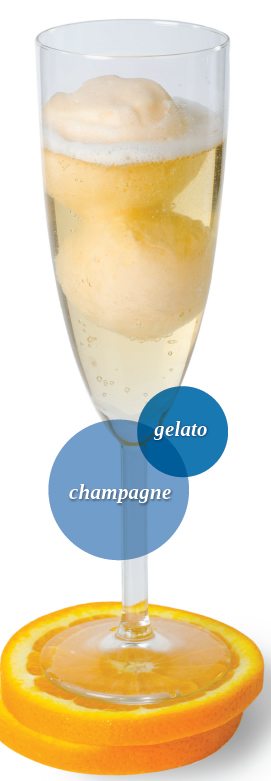When a consumer chooses to dine out, it is important to not only provide a delicious dish, but also to ensure the visit is unique and memorable. This can be achieved in many different ways, but an original and tasty dessert to conclude the meal is imperative to leave a lasting impression. Recent trends point to the desire to enjoy a sweet bite that perfectly completes the dining experience. While the idea of drink and food pairings is not a new one, the trend of creating special alcoholic drink and dessert pairings is catching on and taking off. There are many possible avenues to take when creating delectable drink-dessert pairings to add to menus. As Katzie Guy-Hamilton, executive chef and director of food and beverage at Max Brenner, states, “There are so many opportunities out there, and if you’re not afraid to fail or afraid to learn [then] you can accomplish a lot.”
 Wine, beer or a custom cocktail can be utilized to suit the mood, occasion and flavors on the plate. This is where the fun starts, because there is such a broad range of beverage options boasting a myriad of personalities just waiting to find the perfect dessert to complement.
Wine, beer or a custom cocktail can be utilized to suit the mood, occasion and flavors on the plate. This is where the fun starts, because there is such a broad range of beverage options boasting a myriad of personalities just waiting to find the perfect dessert to complement.
Wine: There are three main factors to consider when pairing wines with desserts:
- Acidity – acidic wines pair best with fruit dishes which also have a natural acidity.
- Intensity – the more intense the flavors of the dessert, the more intense the wine.
- Sweetness – a dessert wine should be sweeter than the dessert itself.
Beer: A few things to keep in mind from www.seriouseats.com since pairing beer and desserts can be a bit tricky:
- Sweetness – the sugar in your dessert can affect the perception of the beer, throwing the dish off balance. Be sure to choose a beer as sweet or sweeter than its accompanying dessert to avoid disastrous taste interactions.
- Intensity – it is best to pair desserts with beers that have a bit less bitterness and alcohol than might seem appropriate. A beer that is too aggressive and bitter will dominate rather than complement.
- Chocolate-based Desserts – stouts and porters complement very nicely, yet don’t forget about the sweetness factor which would keep dry stouts and porters from pairing well. Another less obvious, yet good option would be beers with fruity or caramel flavors to complement without mimicking the chocolaty flavor.
- Fruit-based Desserts – yeasty beer offers a lot of fruity flavors that connect beer to fruit-based desserts really well. And of course, there are always fruit beers that make for great dessert pairings.
Cocktails:
There are endless options when it comes to pairing cocktails with desserts, as they can be invented and tweaked until they match a dish perfectly. Do take into consideration the sweetness factor, however, and follow standard flavor pairing guidelines.
When it comes time to create delicious drink and dessert pairings keep a few other things in mind. Top mixologists Audrey Saunders and Ryan Magarian offered the following advice in the article “Dare to Pair Cocktails and Food” on www.epicurious.com:
- Use Logic – if the flavors don’t complement each other then it’s not a match.
- Compare and Contrast – choose a drink that complements a dessert by either matching or contrasting its flavors; for example, pair spicy with cooling flavors or sweet and fruity with a fruit-flavored dessert to amplify the flavor.
- Add Herbs – herbs are not only an excellent way to bond a drink to the dessert by matching similar flavors, but they can also add an extra layer of complexity.
- Enhance, Don’t Compete – choose a drink that enhances and complements the dessert rather than something too bold or overpowering.
- Ease Up on the Alcohol – when pairing a drink with a dessert that has subtle flavors, it is smart to also choose a subtle drink rather than a particularly alcoholic one (remember: sometimes less is more).
- Consider Body – it is important to pay attention to mouthfeel as well as flavor.
- Keep an Open Mind – sometimes unconventional combinations result in amazingly delicious pairings, so don’t always go for the “safe” and classic combinations, rather play a little and get creative.
While not all trends are worth jumping on the band wagon for, providing unique and delicious dessert pairings can set businesses apart from all the others. Every sip a customer takes should balance and complement the dessert; after all, when a meal finishes on a sweet note you can guarantee that they will be back for more.

